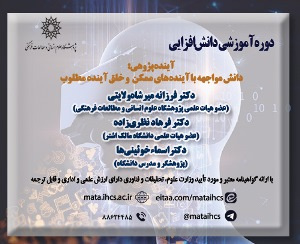بررسی ثبات و عوامل موثر بر تقاضای پول در اقتصاد ایران: تحلیلی بر پایه های خرد (مقاله علمی وزارت علوم)
درجه علمی: نشریه علمی (وزارت علوم)
آرشیو
چکیده
در ادبیات کینزیهای جدید، تقاضای پول خانوارهای ناهمگن میتواند سازوکار انتقال سیاست پولی را تحت تأثیر قرار دهد. همچنین در اقتصادهایی که وابستگی منابع طبیعی دارند، بررسی ثبات تقاضای پول، به دلیل ماهیت و آثار تکانه ها، نقش داراییهای جایگزین پول و تحولات بخشهای تجارت و غیرقابل تجارت، دارای اهمیت است. در پژوهش حاضر با به کارگیری پایه های خرد، توابع تقاضای مانده های حقیقی پول و نقدینگی استخراج و سپس با سه روش ARDL، DOLS و GMM بر اساس دادههای فصلی اقتصاد ایران در دوره Q1-1367 تا Q1-1401 مورد برآورد قرار گرفته و به دلیل ماهیت نقدپذیری برخی از اجزای شبه پول در اقتصاد ایران، محاسبه متغیرهای حجم پول و شبه پول بازنگری شده است. نتایج مطالعه، ضمن تبیین عوامل مؤثر بر تقاضای مانده های حقیقی پول و نقدینگی، به ویژه داراییهای جایگزین مانند پول خارجی و مسکن، نشان از اهمیت توجه به تورم مورد انتظار و همچنین ترکیب پول و شبه پول در اجرای سیاست پولی دارد. همچنین ثبات ساختاری تقاضای پول و نقدینگی برای سالهای تشدید تحریم دهه 90 مورد تردید و هشدارآمیز میباشد. ضرایب تصحیح خطا در الگوهای ECM نشان می دهد که حذف آثار یک تکانه و برگشت به روند بلندمدت برای تقاضای نقدینگی و پول به ترتیب حدود 9 و 5 فصل است، که حاکی از ماندگاری نسبتاً طولانی آثار تکانه ها بر تقاضای نقدینگی نسبت به تقاضای پول می باشد. نتیجه کلی آنکه انتخاب کلهای پولی به عنوان هدف میانی سیاست پولی میتواند در اقتصاد ایران با چالش همراه باشد. طبقه بندی JEL: E41، E00، E52، D04Money Demand Determinants and Stability Analysis in the Economy of Iran: Micro foundations Approach
nvestigating the mechanism of monetary tansmision, considering the microfoundations in money demand, may propose contradictory policy versus macroeconomic theories since households do not hold money equally. Such pattern of behavior can be explained by the new Keynesian literature, which presents micro-based models with the behavior of heterogeneous economic agents. Evaluating the stability of money demand plays a critical role in economies dependent on natural resources due to nature and effects of shocks, role of money substitute assets, and developments in tradable and non-tradable sectors. Here, the demand functions of real M1 and M2 balances were extracted using microfoundations and then estimated by three methods of ARDL, DOLS, and GMM based on quarterly data of the Iranian economy during 1988-Q12022-Q1. For this purpose, the composition of the common monetary aggregate money and quasi-money was revised due to the liquid nature of some quasi-money components in the economy of Iran. The present study aims to examine the variables affecting money and broad money demand in the short and long term, especially alternative assets such as foreign currency, housing, and other durable consumer commodities and expected inflation. The results indicate that the structural stability of the demand for M1 and M2 during 2010s is considered as doubtful and warning. Based on the error correction coefficients in the ECM models, eliminating the effects of a shock and returning to the long-term trend for M2 and M1 demand lasts about 9 and 5 seasons, respectively, meaning that the effects of shocks on broad money demand are relatively long-lasting compared to narrow money j demand. Overall, selecting monetary aggregates as the intermediate target of monetary policy can challenge the economy of Iran.




